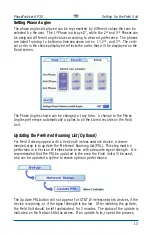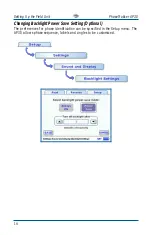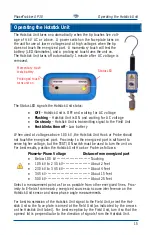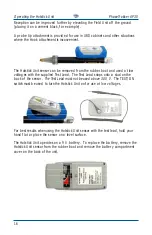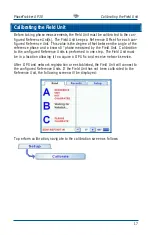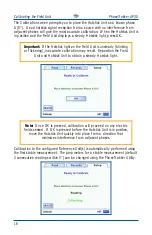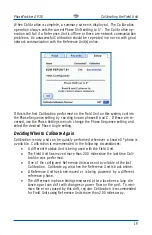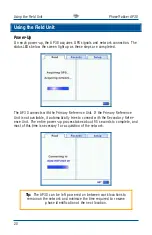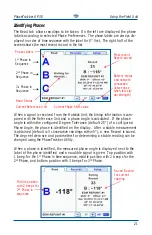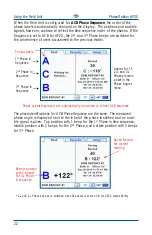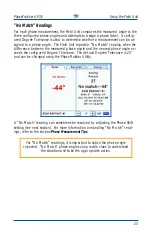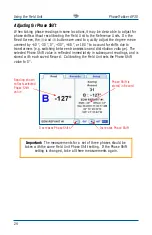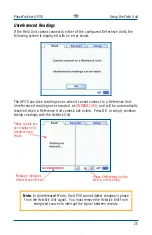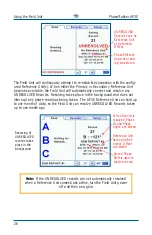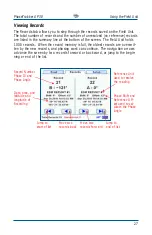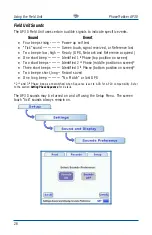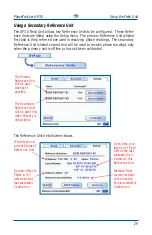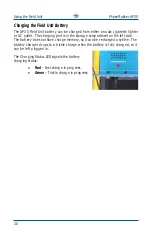
PhaseTrakker
AP30
Operating the Hotstick Unit
15
Operating the Hotstick Unit
The Hotstick Unit turns on automatically when the tip touches live volt-
age of 4 kV AC or above. A power switch on the faceplate turns on
the unit for use at lower voltages and at high voltages when the tip
does not touch the energized part. A momentary touch will test the
battery (LED illuminates), and a prolonged touch turns the unit on.
The Hotstick Unit turns off automatically 1 minute after AC voltage is
removed.
Momentary touch
tests battery
Status LED
Prolonged touch
turns unit on
The Status LED signals the Hotstick Unit status:
•
Off – Hotstick Unit is OFF and waiting for AC voltage
•
Flashing – Hotstick Unit is ON and waiting for AC voltage
•
On steady – Hotstick Unit is transmitting signal to the Field Unit
•
Fast blinks then off – Low battery
When used at voltages above 100 kV, the Hotstick Unit Hook or Probe should
not touch the energized part. Proximity to the energized part is sufficient to
sense higher voltage, but the TEST/ON switch must be used to turn the unit on.
For best results, position the Hotstick Unit Hook or Probe as follows:
Phase-to-Phase Voltage
Distance from energized part
•
Below 100 kV--------------------------Touching
•
100 kV to 230 kV---------------------About 2 feet
•
230 kV to 345 kV---------------------About 4 feet
•
345 kV----------------------------------About 15 feet
•
500 kV----------------------------------About 25 feet
Select a measurement point as far as possible from other energized lines. Prox-
imity to E-fields from nearby energized sources can cause interference on the
Hotstick Unit sensor and skew phase angle measurements.
For best transmission of the Hotstick Unit signal to the Field Unit, orient the Hot-
stick Unit so the face plate is aimed at the Field Unit (as indicated by the arrows
on the Hotstick Unit label). For best reception by the Field Unit, turn it so that the
opened lid is perpendicular to the direction of signals from the Hotstick Unit.













